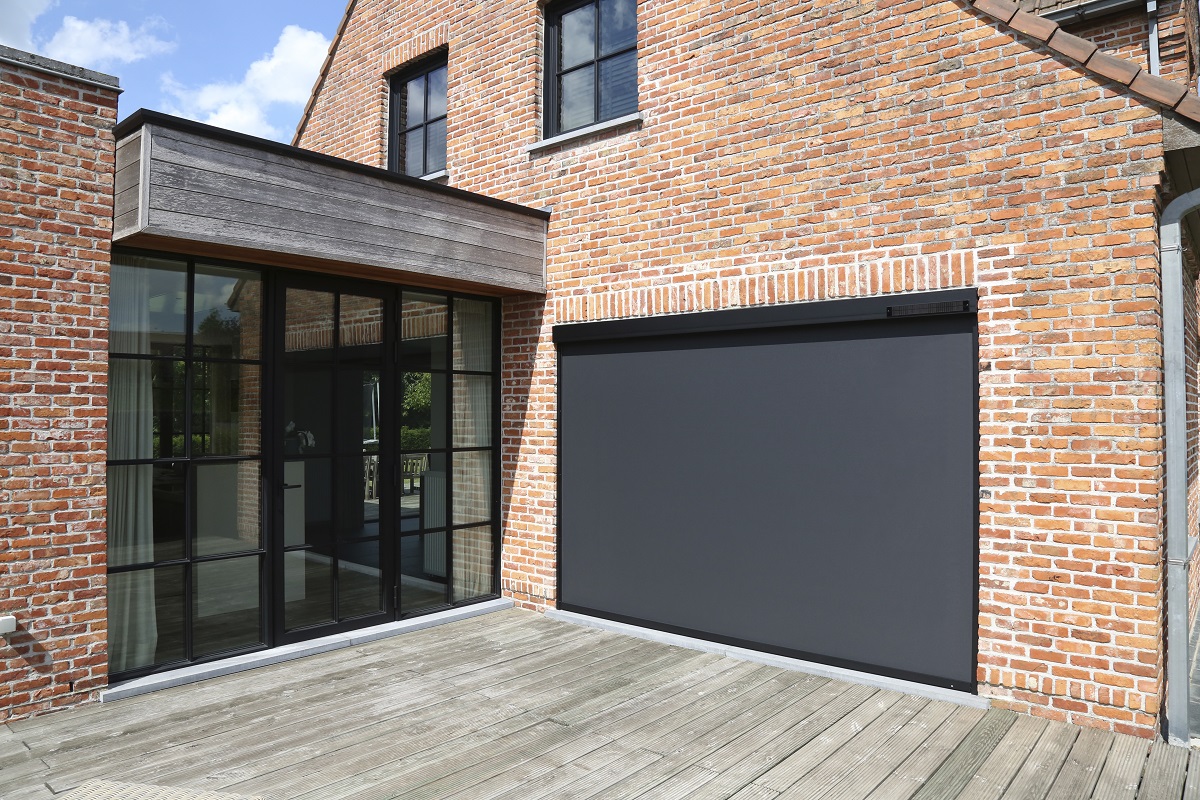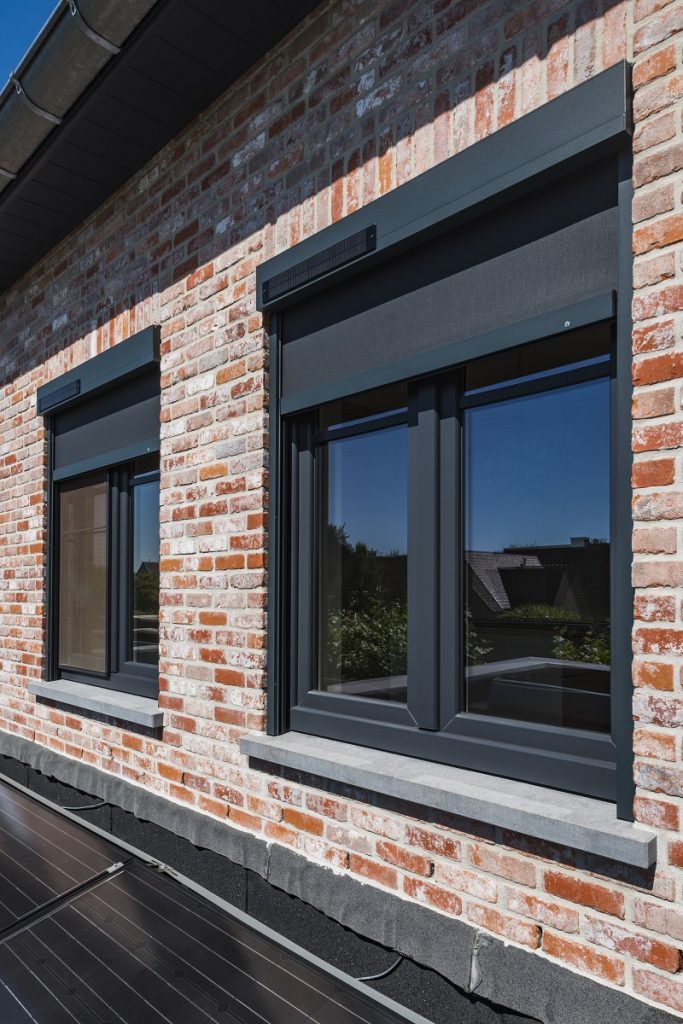

Renson Fixscreen Solar screens offer unique solar protection benefits, with a domestic installation in Belgium demonstrating what the product might offer the Australian market in terms of both function and style. WFA reports.
Record summers have made many homeowners realise that sun protection is not a luxury product, but an essential part of any modern home. Renson’s new surface-mounted screens also combine sun protection with renewable energy.
“Windproof sun protection fabric or external screens have long proved their worth in preventing overheating in the home, but a particularly hot summer back in 2018 gave sales an extra boost,” recalls Roel Berlaen of Waregem-based indoor climate specialist Renson.
“As a pioneer in outdoor sun protection, Renson already had the products in our Fixscreen range, but these are mainly for new buildings. Since there’s also a great demand for screens that can be placed on existing buildings, we have now developed the Fixscreen Solar.”
SOLAR POWERED PROTECTION
Renson’s Fixscreen Solar is equipped with a solar cell and thus generates its own power, meaning that no more connections to the electricity grid are needed. It is completely self-sufficient. The energy thus generated is stored in the internal battery for when the user wants to roll the screen up or down.
The presence of the solar cell also means that it is no longer necessary to drill through walls or pull cables through to connect the motor to the electricity grid. What’s more, the screens can be placed without the installers having to enter the house. So it’s easy for both the customer and the professional. The installer only has to worry about the placement.
Speed and ease of installation are two advantages of the new system, but Fixscreen Solar does exactly what you expect from a screen: it blocks the sun’s rays before they can reach the glass, says Berlaen.
“Cooling modern homes is often a much bigger problem than heating them. Houses nowadays are so well insulated, not to mention perfectly airtight, that it’s not easy for the heat inside to escape. The slightest bit of sunshine immediately causes temperatures to rise, especially in the case of large glass panes.”
“In the past, we often saw architects opting for screens on the inside, but more and more people are starting to realise that it’s a lot more efficient to install them on the outside. With interior screens, you will inevitably end up heating up as soon as sunlight hits the windows.”
EUROPEAN HOME INSTALLATION IN ACTION
A country villa in the Kempen, Belgium, was a site that ultimately demonstrated the benefits of Fixscreen Solar screens. There, Bart Damen of local sun protection specialist Walbers installed a number of screens on the top floor.
He says the installation process was typically simple.
“We had to install six Fixscreens in this home, and we’d planned a morning for this; normally this should have been more than enough. The installation itself is very quick. Renson manufactures all the components to order. If the measurements are taken correctly, we hardly have any work to do during assembly and installation.”
“First, we apply the screen fabric guiding channels to the reveal of the windows. The aluminium head box, into which the rolled screen disappears, goes on top of this. The solar cell can be positioned to the left or right on the fabric box. The screen comes with a radio-controlled motor and the battery is located in a tube profile at the bottom of the head box.”
“When we arrived on site, all we had to do was check that all parts fit the window, pre-drill a few holes for the guiding channels, and then secure them with plugs and screws. This makes installation a piece of cake for an experienced professional.”
He adds however, that it’s important to have a good eye for detail. “After all, everything must be nice and level and straight so that the fabric does not pucker or sag.”
“Then comes the last important task: testing the motor. We check whether the motor functions properly and rolls up and down in the right direction, and we set the end points of the screen correctly. Although it’s possible to connect all the screens to a single circuit, it’s still important for us to test them one by one, so that we can be sure that each screen does what it’s supposed to do.”

SUBTLE DESIGN
The Fixscreen Solar screen design has been developed thoroughly, with the dimensions of the head box deliberately kept as small as possible to preserve optimal window surface on the one hand, and to keep the screens discreet on the other.
“The thinking is that these should not be conspicuously visible and disrupt the overall look of the façade. Thanks to the small size of the head boxes, the screens are rather inconspicuous, and the unsuspecting passer-by will not even notice them.”
RENSON FIXSCREEN SOLAR – FEATURES AND BENEFITS

More info:
Nassim Courail, Sales Manager Australia +61 403 722 322 [email protected]